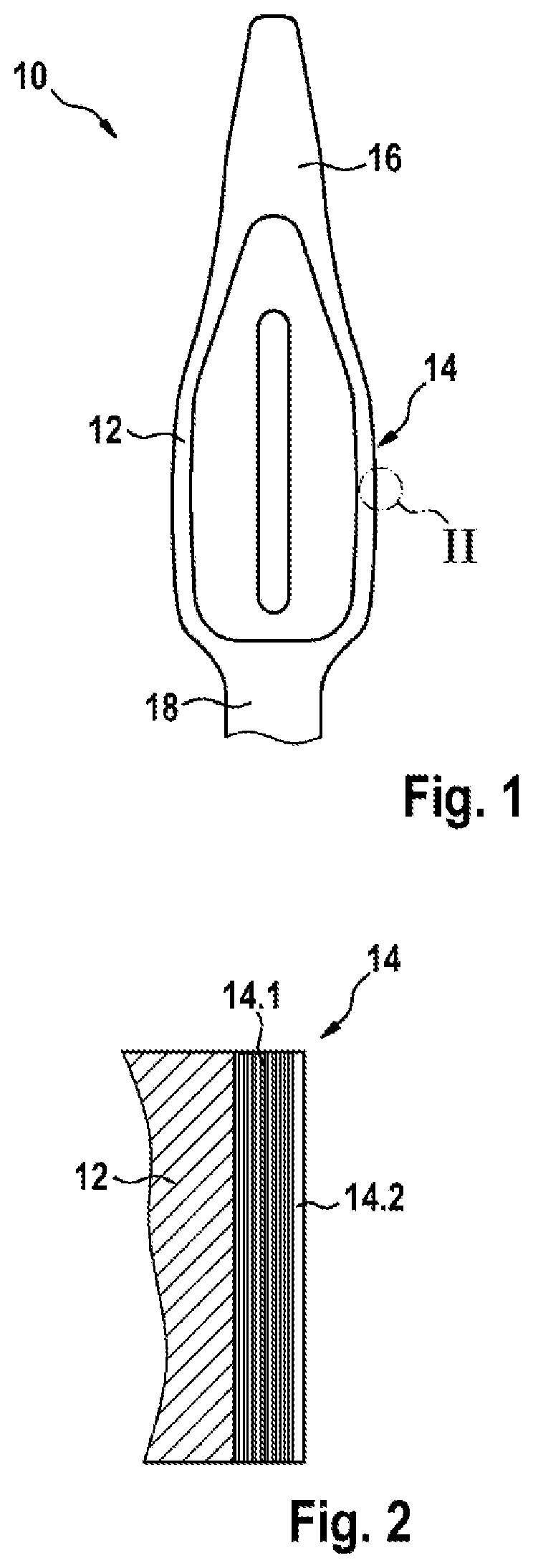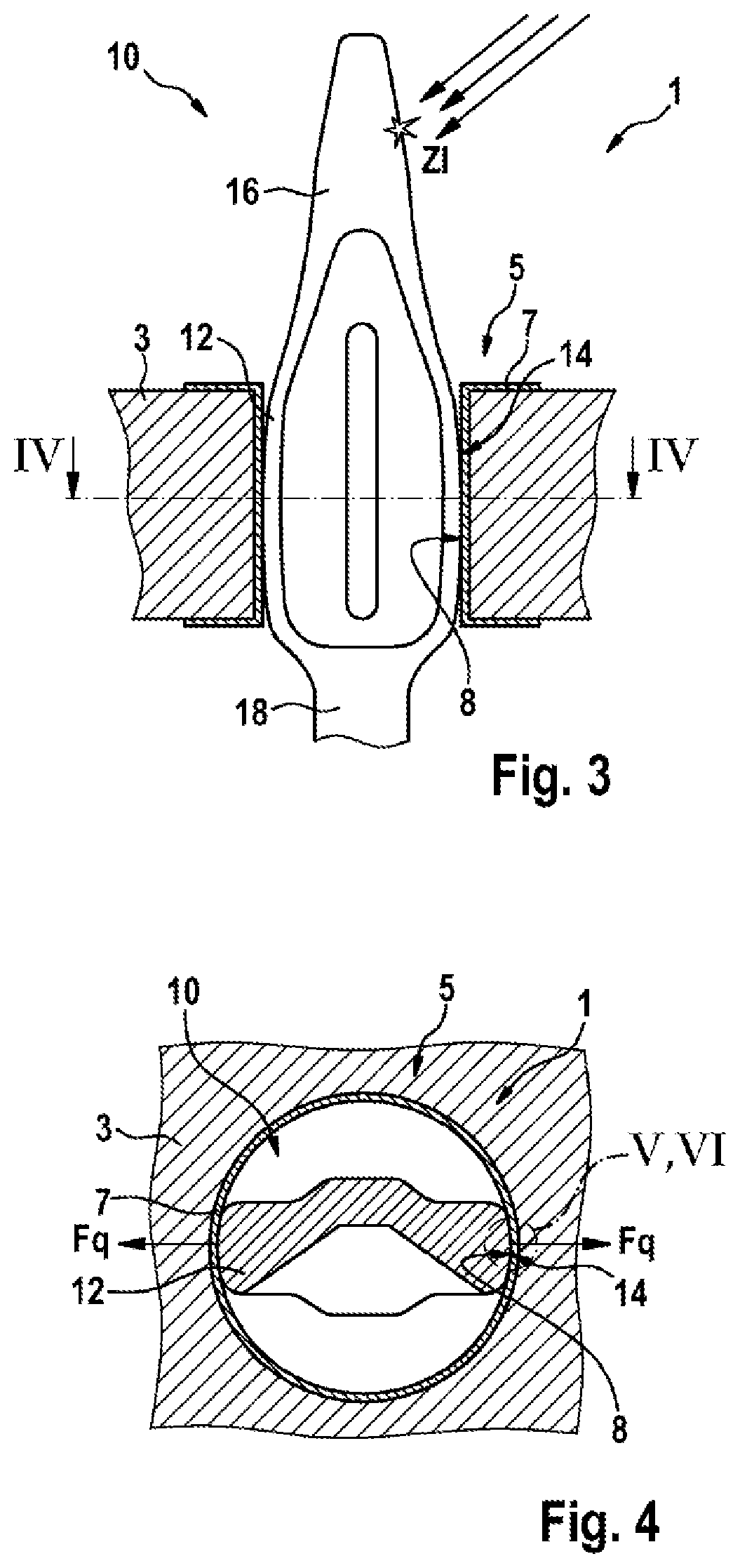Press-in pin for an electrical contacting assembly
a technology of electrical contact and press-in pin, which is applied in the direction of soldering/welded conductive connections, line/current collector details, electrical apparatus, etc., can solve the problems of excessive deformation of copper layers, short circuits, and the mechanical system of the day press-in technology, and achieve low compressive stress and high load-bearing capacity.
- Summary
- Abstract
- Description
- Claims
- Application Information
AI Technical Summary
Benefits of technology
Problems solved by technology
Method used
Image
Examples
Embodiment Construction
lass="d_n">[0023]As is shown in FIG. 1, the illustrated exemplary embodiment of a press-in pin 10 according to the invention for an electrical contact-making arrangement 1 comprises an elastic press-in region 12 and an electrically conductive coating 14. Here, the coating 14 comprises a reactive multilayer 14.1 which is applied to the press-in pin 10 and a first contact layer 14.2 which is applied to the reactive multilayer 14.1.
[0024]In the illustrated exemplary embodiment of the press-in pin 10, the reactive multilayer 14.1 is applied to an effective press-in length of the elastic press-in region 12. In the illustrated exemplary embodiment, the reactive multilayer 14.1 contains aluminum as the first metal material and nickel as the second metal material. The reactive multilayer 14.1, which is formed as a nickel-aluminum layer stack, has a releasing bond enthalpy of −59 kJ / mol and generates an adiabatic reaction temperature of 1639° C. It goes without saying that the reactive multi...
PUM
| Property | Measurement | Unit |
|---|---|---|
| deposition rates | aaaaa | aaaaa |
| melting point | aaaaa | aaaaa |
| melting point | aaaaa | aaaaa |
Abstract
Description
Claims
Application Information
 Login to View More
Login to View More - R&D
- Intellectual Property
- Life Sciences
- Materials
- Tech Scout
- Unparalleled Data Quality
- Higher Quality Content
- 60% Fewer Hallucinations
Browse by: Latest US Patents, China's latest patents, Technical Efficacy Thesaurus, Application Domain, Technology Topic, Popular Technical Reports.
© 2025 PatSnap. All rights reserved.Legal|Privacy policy|Modern Slavery Act Transparency Statement|Sitemap|About US| Contact US: help@patsnap.com



